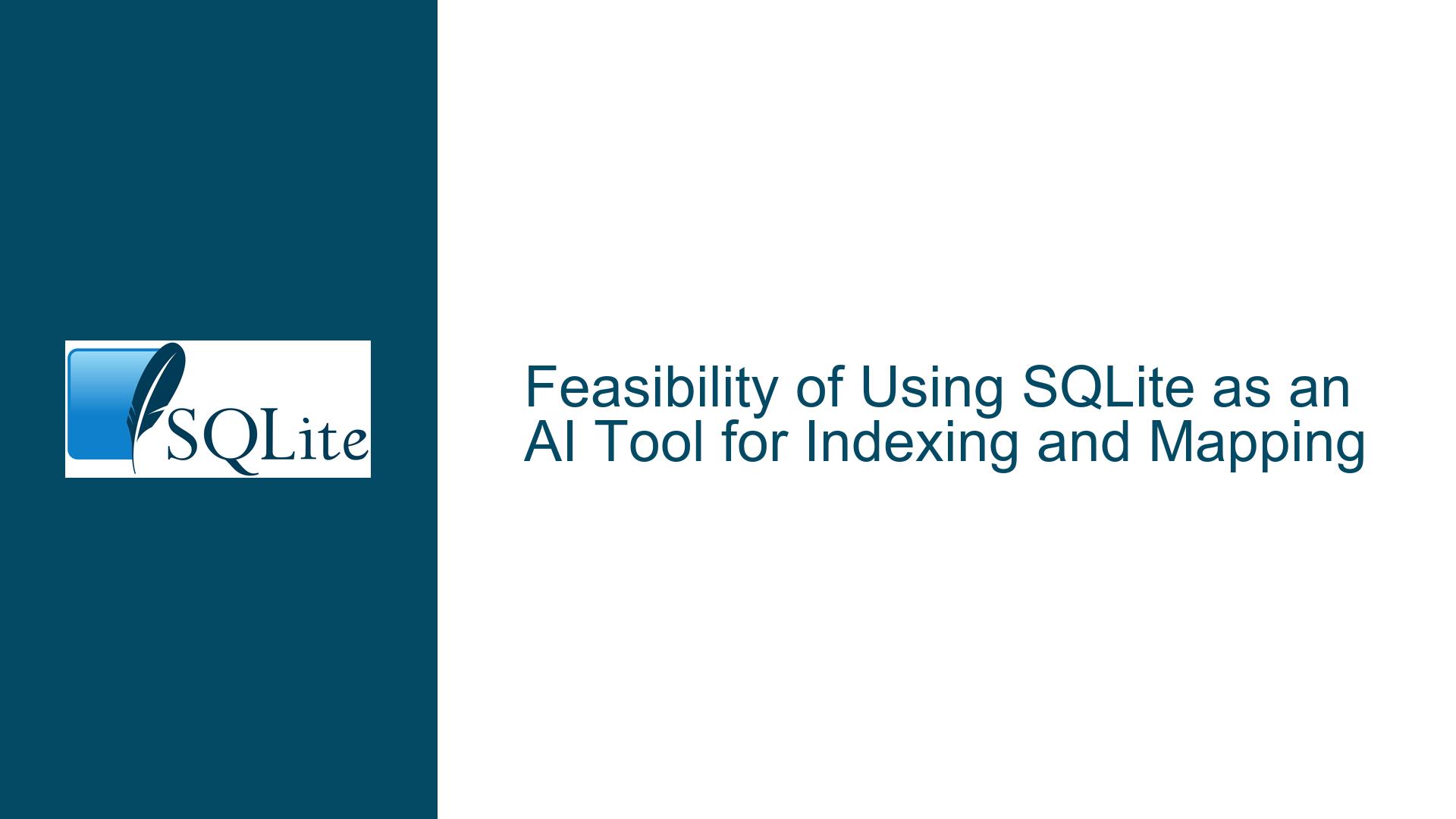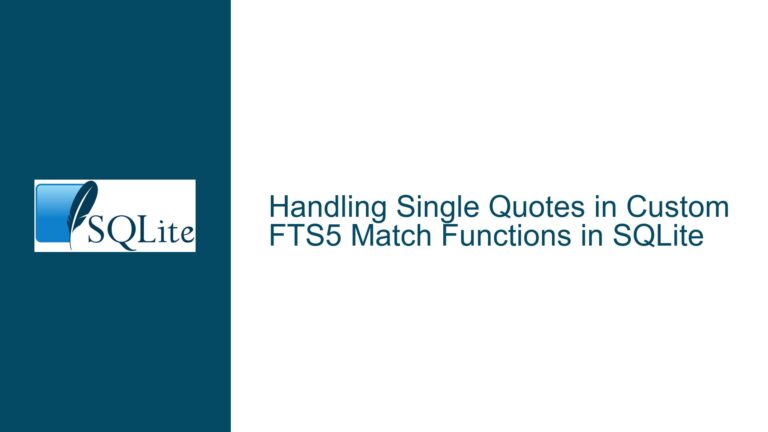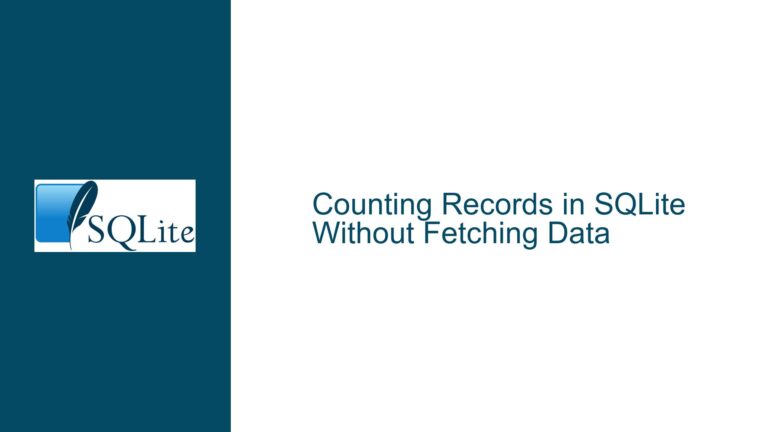Feasibility of Using SQLite as an AI Tool for Indexing and Mapping
Understanding the Core Concept: SQLite as an AI Mapping and Indexing Tool
The core idea revolves around leveraging SQLite as a tool for artificial intelligence (AI) applications, specifically for mapping input vectors to output scalars or vectors. This concept draws a parallel between AI’s learning process and database indexing, where the goal is to efficiently store and retrieve data based on specific criteria. The discussion highlights the potential of using SQLite to store training data (input-output pairs) and perform lookups to find the closest match for a given input, akin to how AI models make predictions.
SQLite, being a lightweight, serverless, and embedded database, is often praised for its simplicity and efficiency in handling structured data. However, its applicability in AI contexts, particularly for tasks like classification, regression, or other forms of machine learning (ML), is not straightforward. The discussion raises questions about the feasibility of using SQLite for such purposes, touching on aspects like data storage, retrieval speed, and the computational requirements of AI algorithms.
To fully understand the feasibility, we must first break down the problem into its fundamental components. The primary challenge lies in translating the abstract concept of AI’s learning process into concrete database operations. This involves understanding how SQLite handles data storage, indexing, and querying, and whether these capabilities align with the requirements of AI algorithms.
Possible Causes of Limitations in Using SQLite for AI Applications
One of the main limitations of using SQLite for AI applications is its lack of native support for complex data types, such as vectors or matrices, which are fundamental to many AI algorithms. While SQLite can store arbitrary data as BLOBs (Binary Large Objects), this approach does not inherently provide the necessary functionality for efficient vector operations or nearest-neighbor searches. AI algorithms often require specialized data structures and indexing techniques, such as k-d trees, ball trees, or locality-sensitive hashing, to perform these operations efficiently.
Another limitation is the computational overhead associated with performing complex calculations within SQLite. AI algorithms, particularly those involving deep learning or large-scale optimization, often require significant computational resources, including GPU acceleration and parallel processing. SQLite, being a lightweight database, is not designed to handle such intensive computations. While it can store the data used for training and inference, the actual processing would need to be offloaded to external libraries or frameworks, such as TensorFlow, PyTorch, or scikit-learn.
Additionally, the scalability of SQLite may be a concern for large-scale AI applications. SQLite is optimized for single-user or low-concurrency environments, making it less suitable for applications that require high throughput or real-time processing. In contrast, many AI applications, particularly those involving big data or real-time decision-making, require distributed databases or specialized storage solutions that can handle large volumes of data and high query loads.
The discussion also touches on the distinction between AI and machine learning (ML), with some participants arguing that the described use case is more aligned with ML than AI. While the terms are often used interchangeably, ML is a subset of AI that focuses on training models to make predictions based on data. The core idea of mapping input vectors to output scalars or vectors is indeed a fundamental concept in ML, and the challenges of using SQLite for this purpose are largely rooted in the limitations of traditional relational databases for ML workloads.
Troubleshooting Steps, Solutions, and Fixes for Using SQLite in AI Contexts
To address the challenges of using SQLite for AI applications, several approaches can be considered. One potential solution is to use SQLite as a storage layer for training data, while offloading the actual computation to external ML frameworks. This hybrid approach allows SQLite to handle data storage and retrieval, while specialized ML libraries handle the complex computations required for training and inference. For example, SQLite can store the input-output pairs used for training, and a Python script using scikit-learn can load the data, train the model, and perform predictions.
Another approach is to extend SQLite’s functionality through custom extensions or third-party libraries. Several projects are underway to add support for vector operations and nearest-neighbor searches in SQLite. These extensions can provide the necessary functionality for AI applications, such as efficient storage and retrieval of high-dimensional data. By integrating these extensions, SQLite can be used as a more capable tool for AI and ML workloads.
For applications that require real-time processing or high throughput, it may be necessary to consider alternative databases or storage solutions. Distributed databases, such as Apache Cassandra or Amazon DynamoDB, can handle large volumes of data and high query loads, making them more suitable for real-time AI applications. Similarly, specialized vector databases, such as Pinecone or Weaviate, are designed specifically for storing and querying high-dimensional data, making them ideal for AI and ML use cases.
In cases where SQLite is used for smaller-scale AI applications, optimizing the database schema and indexing strategy can improve performance. For example, creating composite indexes on multiple columns can speed up queries that involve multiple attributes. Additionally, using appropriate data types and normalization techniques can reduce storage overhead and improve query performance. However, it is important to note that these optimizations may not be sufficient for large-scale or computationally intensive AI applications.
Finally, it is crucial to establish clear criteria for feasibility when considering SQLite for AI applications. Factors such as data volume, query complexity, computational requirements, and performance expectations should be carefully evaluated. By understanding the specific requirements of the application, it is possible to determine whether SQLite is a suitable tool or if alternative solutions should be considered.
In conclusion, while SQLite has several limitations when it comes to AI applications, it can still be a valuable tool in certain contexts. By leveraging external ML frameworks, custom extensions, or alternative databases, it is possible to overcome some of these limitations and use SQLite effectively for AI and ML workloads. However, it is important to carefully evaluate the specific requirements of the application and consider the trade-offs involved in using SQLite for AI purposes.






